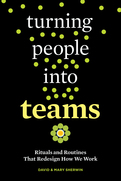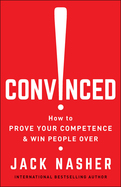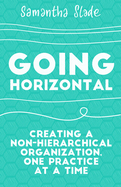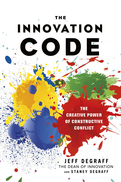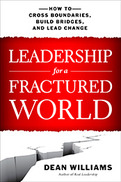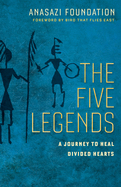Search Results: "Social Venture Networks"
Results 385-390 of 404
"Project and team leaders, do yourself a favor and make this book required reading by each member of your team!" —HR Professionals Magazine
Collaborative strategies work when they're designed by teams—where each person is heard, valued, and held accountable. This book is a practical guide for project team leaders and individual contributors who want their teams to play by a better set of rules.
Today's teams want more alignment among their members, better decision-making processes, and a greater sense of ownership over their work. This can be easy, even fun, if you have the right rituals.
Rituals are group activities during which people go through a series of behaviors in a specific order. They give teams the ability to create a collective point of view and reshape the processes that affect their day-to-day work. In Turning People into Teams, you'll find dozens of practical rituals for finding a common purpose at the beginning of a project, getting unstuck when you hit bottlenecks or brick walls, and wrapping things up at the end and moving on to new teams.
Customizable for any industry, work situation, or organizational philosophy, these rituals have been used internationally by many for-profit and not-for-profit organizations. By implementing just a few of these rituals, a team can capture the strengths of each individual for incredible results, making choices together that matter.
Collaborative strategies work when they're designed by teams—where each person is heard, valued, and held accountable. This book is a practical guide for project team leaders and individual contributors who want their teams to play by a better set of rules.
Today's teams want more alignment among their members, better decision-making processes, and a greater sense of ownership over their work. This can be easy, even fun, if you have the right rituals.
Rituals are group activities during which people go through a series of behaviors in a specific order. They give teams the ability to create a collective point of view and reshape the processes that affect their day-to-day work. In Turning People into Teams, you'll find dozens of practical rituals for finding a common purpose at the beginning of a project, getting unstuck when you hit bottlenecks or brick walls, and wrapping things up at the end and moving on to new teams.
Customizable for any industry, work situation, or organizational philosophy, these rituals have been used internationally by many for-profit and not-for-profit organizations. By implementing just a few of these rituals, a team can capture the strengths of each individual for incredible results, making choices together that matter.
Convinced!
2018
Competence does not speak for itself! You can't simply display it; you have to draw people's attention to it. World-renowned negotiation and deception detection expert, business professor, and mentalist Jack Nasher offers effective, proven techniques to convince others that we are talented, trustworthy, and yes, even brilliant.
Nasher offers the example of Joshua Bell, possibly the world's most famous violinist. In January 2007, at rush hour, he stepped into a Washington, DC, subway station, dressed like any street busker, and began to play a $4,000,000 Stradivarius. It was part of an experiment staged by a journalist of the Washington Post, who expected Bell's skill alone to attract an immense, awed crowd. But Bell was generally ignored, and when he stopped, nobody applauded. He made $34.17.
The good news is that you don't have to accept obscurity: you can positively affect others' perception of your talent. Whether you're looking for work, giving an important presentation, seeking clients or customers for your business, or vying for a promotion, Nasher explains how to use techniques such as expectation management, verbal and nonverbal communication, the Halo Effect, competence framing, and the power of nonconformity to gain control of how others perceive you.
Competence is the most highly valued professional trait. But it's not enough to be competent, you have to convey your competence. With Nasher's help you can showcase your expertise, receive the recognition you deserve, and achieve lasting success.
Nasher offers the example of Joshua Bell, possibly the world's most famous violinist. In January 2007, at rush hour, he stepped into a Washington, DC, subway station, dressed like any street busker, and began to play a $4,000,000 Stradivarius. It was part of an experiment staged by a journalist of the Washington Post, who expected Bell's skill alone to attract an immense, awed crowd. But Bell was generally ignored, and when he stopped, nobody applauded. He made $34.17.
The good news is that you don't have to accept obscurity: you can positively affect others' perception of your talent. Whether you're looking for work, giving an important presentation, seeking clients or customers for your business, or vying for a promotion, Nasher explains how to use techniques such as expectation management, verbal and nonverbal communication, the Halo Effect, competence framing, and the power of nonconformity to gain control of how others perceive you.
Competence is the most highly valued professional trait. But it's not enough to be competent, you have to convey your competence. With Nasher's help you can showcase your expertise, receive the recognition you deserve, and achieve lasting success.
Going Horizontal
2018
Hierarchy in organizations is obsolete. There is a better way: one that increases the engagement of employees and managers alike, reduces micromanaging and other limiting approaches, and promotes organizational and individual success.
In this book, self-management expert Samantha Slade presents seven concrete practices to help your organization flatten its existing hierarchy and develop a horizontal organization. The result will be enhanced creativity, greater growth, and a increased employee retention and productivity—and a better bottom line.
These days, more than ever, successful organizations must respond quickly and nimbly to change—they need every employee's best thinking. A horizontal organization creates an environment of true collaboration, respect, and openness. It allows everyone more freedom to express unconventional ideas or to work through issues that are getting in the way of organizational goals. And it's a more human way to organize—after all, we function perfectly well in our day-to day lives without someone telling us what to do.
But when an organization decides to go horizontal, it can be overwhelming for both managers and employees. Slade offers a practical, proven, incremental method to help organizations of all kinds and sizes ease in to a non-hierarchical model. She includes techniques for using your organization's purpose to stay focused and aligned, developing shared decision-making, creating a mutual feedback culture, nurturing autonomy, holding co-managed meetings, and maintaining an environment of collective learning.
Going Horizontal will help organizations become more adaptive, collaborative and innovative, which is vital in today's highly competitive and constantly-evolving world.
In this book, self-management expert Samantha Slade presents seven concrete practices to help your organization flatten its existing hierarchy and develop a horizontal organization. The result will be enhanced creativity, greater growth, and a increased employee retention and productivity—and a better bottom line.
These days, more than ever, successful organizations must respond quickly and nimbly to change—they need every employee's best thinking. A horizontal organization creates an environment of true collaboration, respect, and openness. It allows everyone more freedom to express unconventional ideas or to work through issues that are getting in the way of organizational goals. And it's a more human way to organize—after all, we function perfectly well in our day-to day lives without someone telling us what to do.
But when an organization decides to go horizontal, it can be overwhelming for both managers and employees. Slade offers a practical, proven, incremental method to help organizations of all kinds and sizes ease in to a non-hierarchical model. She includes techniques for using your organization's purpose to stay focused and aligned, developing shared decision-making, creating a mutual feedback culture, nurturing autonomy, holding co-managed meetings, and maintaining an environment of collective learning.
Going Horizontal will help organizations become more adaptive, collaborative and innovative, which is vital in today's highly competitive and constantly-evolving world.
The Innovation Code
2017
The Innovation Code
The Creative Power of Constructive Conflict
Harmony is sublime in music but deadly to innovation. The only way to create new, hybrid solutions is to clash. Innovation happens when we bring people with contrasting perspectives and complementary areas of expertise together in one room. We innovate best with people who challenge us, not people who agree with us.
It sounds like a recipe for chaos and confusion. But in The Innovation Code, Jeff DeGraff, dubbed the “Dean of Innovation,” and Staney DeGraff introduce a simple framework to explain the ways different kinds of thinkers and leaders can create constructive conflict in any organization. This positive tension produces ingenious solutions that go far beyond “the best of both worlds.”
Drawing on their work with nearly half of the Fortune 500 companies, the DeGraffs help you harness the creative energy that arises from opposing viewpoints. They identify four contrasting styles of innovator—the Artist, the Engineer, the Athlete, and the Sage—and include exercises and assessments for building, managing, and embracing the dynamic discord of a team that contains all four. You can also figure out where you fit on the continuum of innovator archetypes.
Using vivid examples, The Innovation Code offers four steps to normalize conflict and channel it to develop something completely new. By following these simple steps, you will get breakthrough innovations that are both good for you and your customers. This is a rigorous but highly accessible guide for achieving breakthrough solutions by utilizing the full—and seemingly contradictory—spectrum of innovative thinking.
The Creative Power of Constructive Conflict
Harmony is sublime in music but deadly to innovation. The only way to create new, hybrid solutions is to clash. Innovation happens when we bring people with contrasting perspectives and complementary areas of expertise together in one room. We innovate best with people who challenge us, not people who agree with us.
It sounds like a recipe for chaos and confusion. But in The Innovation Code, Jeff DeGraff, dubbed the “Dean of Innovation,” and Staney DeGraff introduce a simple framework to explain the ways different kinds of thinkers and leaders can create constructive conflict in any organization. This positive tension produces ingenious solutions that go far beyond “the best of both worlds.”
Drawing on their work with nearly half of the Fortune 500 companies, the DeGraffs help you harness the creative energy that arises from opposing viewpoints. They identify four contrasting styles of innovator—the Artist, the Engineer, the Athlete, and the Sage—and include exercises and assessments for building, managing, and embracing the dynamic discord of a team that contains all four. You can also figure out where you fit on the continuum of innovator archetypes.
Using vivid examples, The Innovation Code offers four steps to normalize conflict and channel it to develop something completely new. By following these simple steps, you will get breakthrough innovations that are both good for you and your customers. This is a rigorous but highly accessible guide for achieving breakthrough solutions by utilizing the full—and seemingly contradictory—spectrum of innovative thinking.
Leaders today—whether in corporations or associations, nonprofits or nations—face massive, messy, multidimensional problems. No one person or group can possibly solve them—they require the broadest possible cooperation. But, says Harvard scholar Dean Williams, our leadership models are still essentially tribal: individuals with formal authority leading in the interest of their own group. In this deeply needed new book, he outlines an approach that enables leaders to transcend internal and external boundaries and help people to collaborate, even people over whom they technically have no power.
Drawing on what he's learned from years of working in countries and organizations around the world, Williams shows leaders how to approach the delicate and creative work of boundary spanning, whether those boundaries are cultural, organizational, political, geographic, religious, or structural. Sometimes leaders themselves have to be the ones who cross the boundaries between groups. Other times, a leader's job is to build relational bridges between divided groups or even to completely break down the boundaries that block collaborative problem solving. By thinking about power and authority in a different way, leaders will become genuine change agents, able to heal wounds, resolve conflicts, and bring a fractured world together.
Drawing on what he's learned from years of working in countries and organizations around the world, Williams shows leaders how to approach the delicate and creative work of boundary spanning, whether those boundaries are cultural, organizational, political, geographic, religious, or structural. Sometimes leaders themselves have to be the ones who cross the boundaries between groups. Other times, a leader's job is to build relational bridges between divided groups or even to completely break down the boundaries that block collaborative problem solving. By thinking about power and authority in a different way, leaders will become genuine change agents, able to heal wounds, resolve conflicts, and bring a fractured world together.
The Five Legends
2019
Drawing on 30 years of helping families in-crisis, this profound fable by the Anasazi Foundation illustrates the anguish of conflict and shows how we can end war within ourselves, within families, and even between nations.
The Five Legends tells the story of two estranged brothers, leaders of their people, who find themselves on an unexpected journey. Struggling against each other, they stumble and fall into a great and terrible canyon. Trapped, the two brothers are rescued by an old man—“the last of a people”—who offers to guide them out of the canyon if they agree to learn the five legends of peace. The brothers agree and begin a journey that may not only save themselves, but also their people.
The brothers learn that to heal any conflict we must first look within ourselves. As this fable beautifully puts it, “War does not begin or end with armies and leaders. In truth, war begins and ends within each of us—within our hearts. When we choose to war with others, we turn our hearts away from them and blind ourselves to their light. …To have a heart at war is to invite war into your life.” The path to peace begins when we stop thinking about “me” and start thinking about “WE.”
This poetic and moving allegory is written for all ages. Its message is both timeless and desperately needed for our own time
The Five Legends tells the story of two estranged brothers, leaders of their people, who find themselves on an unexpected journey. Struggling against each other, they stumble and fall into a great and terrible canyon. Trapped, the two brothers are rescued by an old man—“the last of a people”—who offers to guide them out of the canyon if they agree to learn the five legends of peace. The brothers agree and begin a journey that may not only save themselves, but also their people.
The brothers learn that to heal any conflict we must first look within ourselves. As this fable beautifully puts it, “War does not begin or end with armies and leaders. In truth, war begins and ends within each of us—within our hearts. When we choose to war with others, we turn our hearts away from them and blind ourselves to their light. …To have a heart at war is to invite war into your life.” The path to peace begins when we stop thinking about “me” and start thinking about “WE.”
This poetic and moving allegory is written for all ages. Its message is both timeless and desperately needed for our own time


